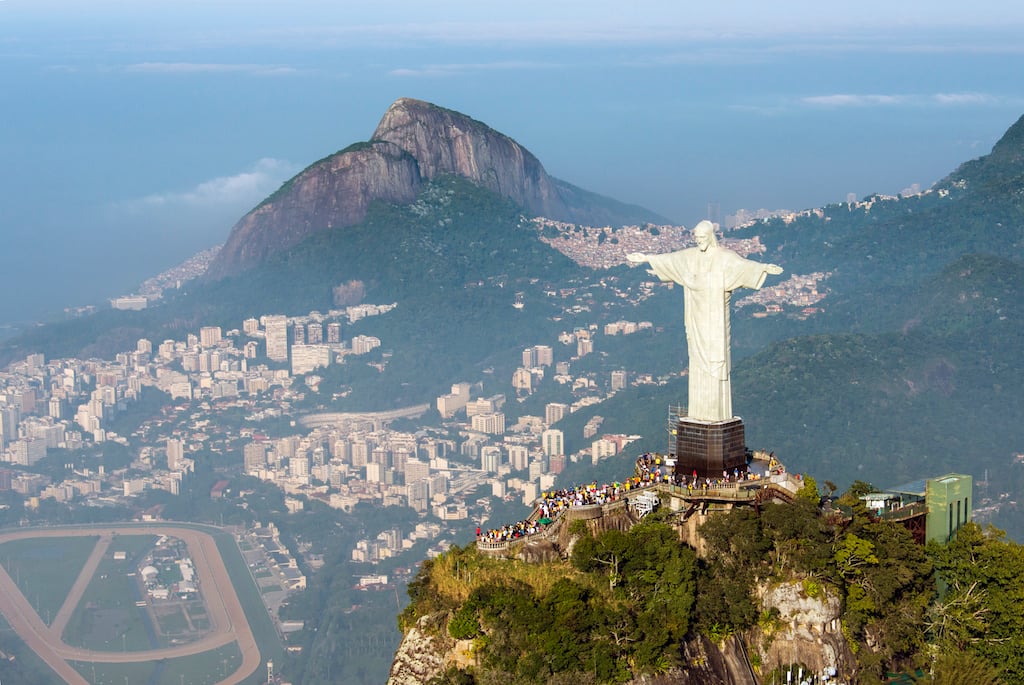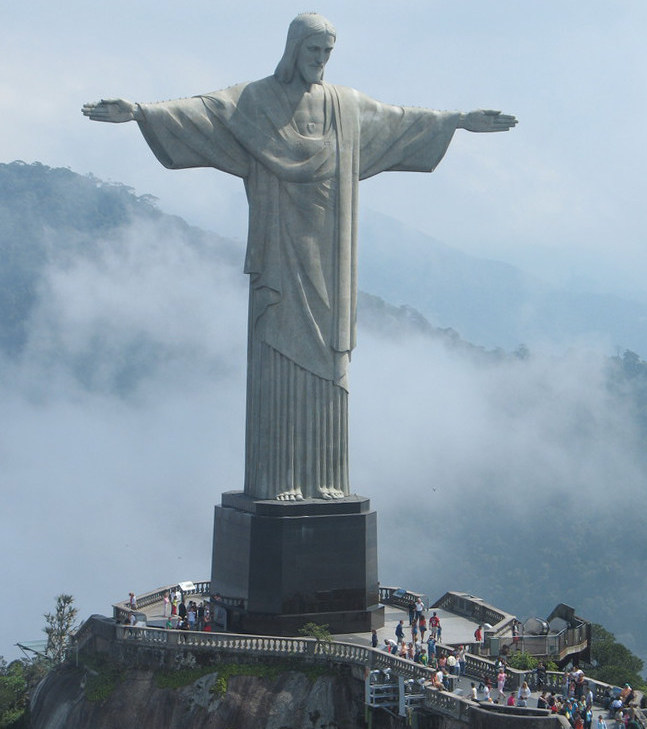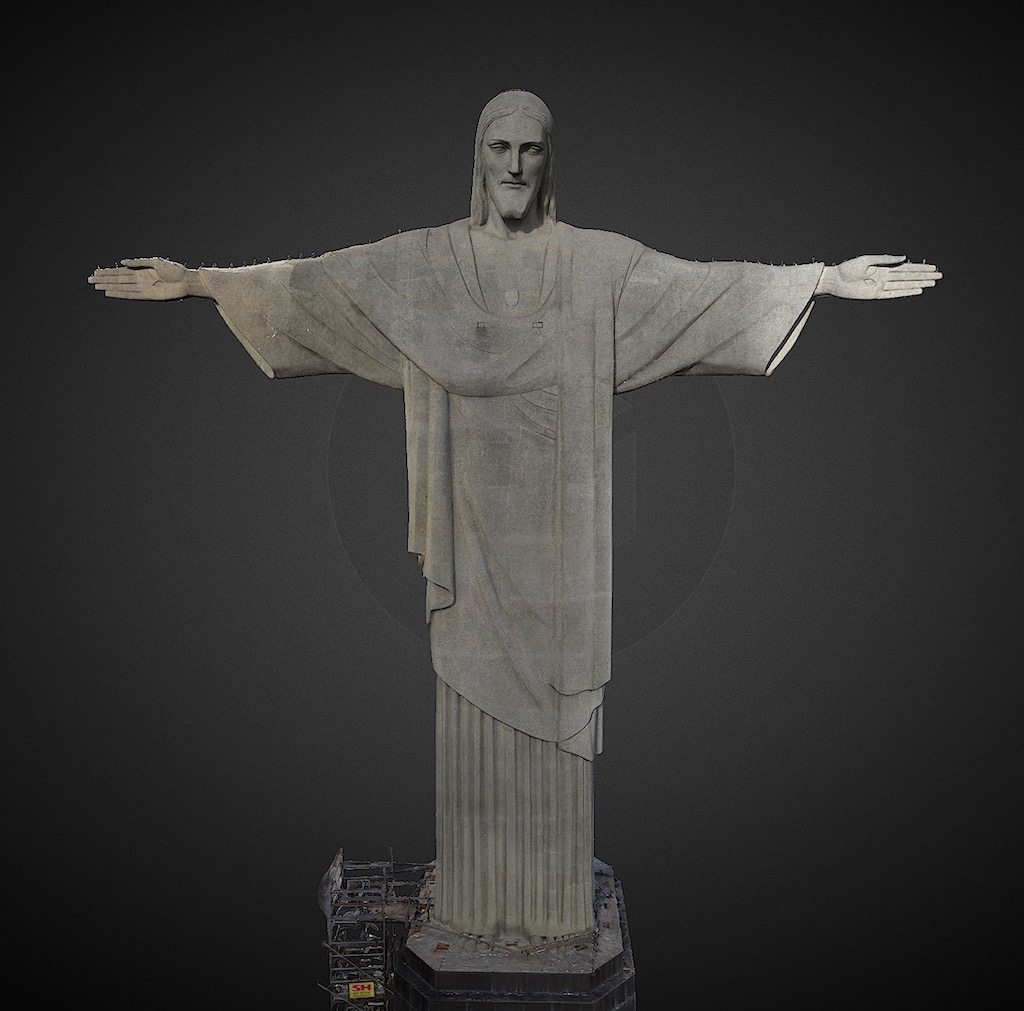
Brazil’s most famous statue has been 3D scanned in incredible detail.
The statue is “Christ the Redeemer” by French sculptor Paul Landowski, which sits atop the 700m tall Corcovado mountain that overlooks the city of Rio de Janeiro.

The sculpture is massive. Take a close look at the bottom of this image, showing the statue in real life. Those very small pixel-sized bits at the bottom are actually real live people. Including the pedestal, the statue is 38m tall. Even the arm-span is an incredible 28m wide!
Such a large object would be a very difficult item to 3D scan in any circumstances, but Christ the Redeemer offers another challenge. At the top of the mountain, as seen here, its height can pose difficulties, not the least of which would be wind.

Nevertheless, a team composed of Pix4D, Aeryon Labs and PUC University of Rio de Janeiro managed to capture what they say is the “first accurate 3D model” of the statue.
The scan was performed by drones that flew in precise patterns around each side of the sculpture, capturing high resolution photos while doing so. These images were later processed with special software to generate the detailed 3D model. Pix4D explains:
Despite strong wind, fickle weather conditions, restricted hours for data acquisition, and inconsistent lighting, the project team acquired over 3,500 images. 2,090 of those images, 82 manual tie points and a linear measurement were used in Pix4Dmapper Pro to create an impressive 3D model of Christ the Redeemer and the surrounding area in high resolution. Results are in the format of a point cloud with 134.4 million points and a full textured 3D mesh with 2.5 million triangles.
The beautiful completed 3D model is, as far as we can determine, not available for download. However, you can instead view it online through SketchFab, who provide an ability to deploy a 3D model to a web viewing panel as seen at the link below.
This is obviously a demonstration of the capabilities of 3D scanning via drones, and it seems to have worked out very well. The scan is near perfect. One wonders what other famous structures could be captured in this manner.
Via SketchFab and Pix4D
Image Credit: Wikipedia and Wikipedia

